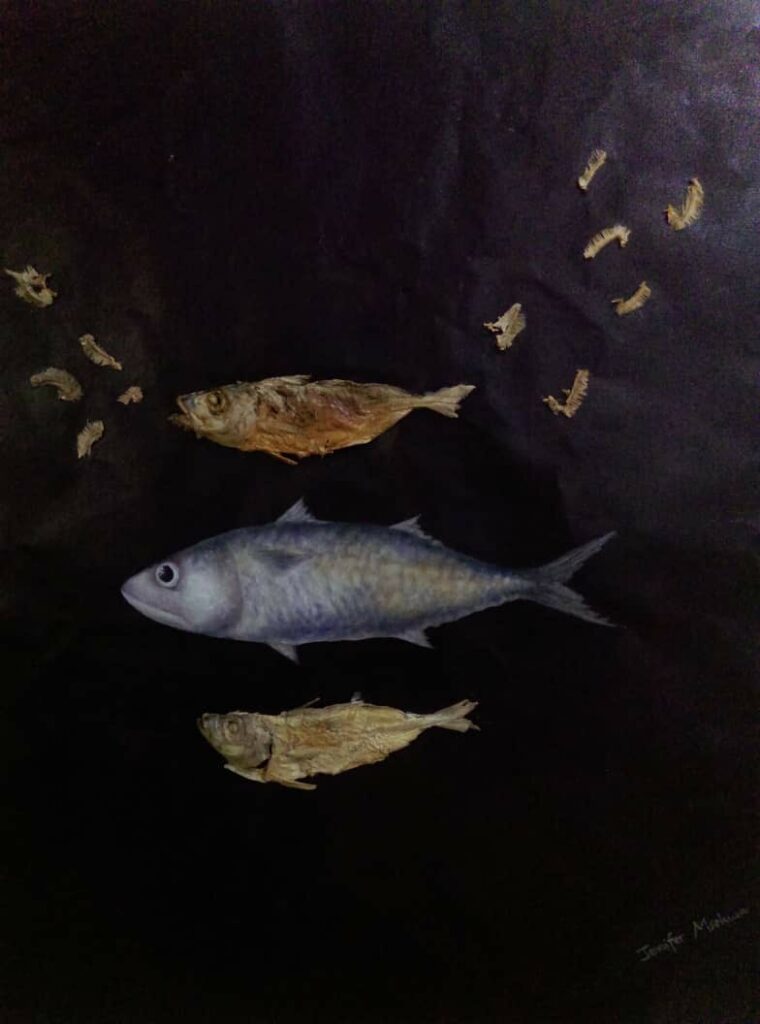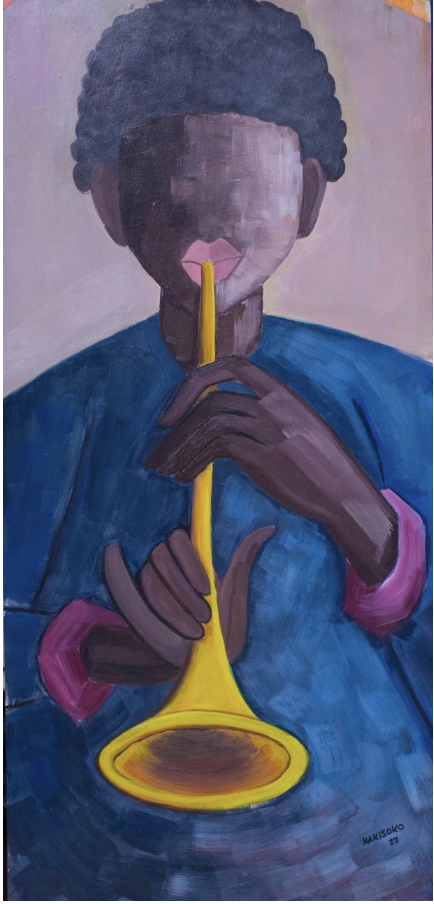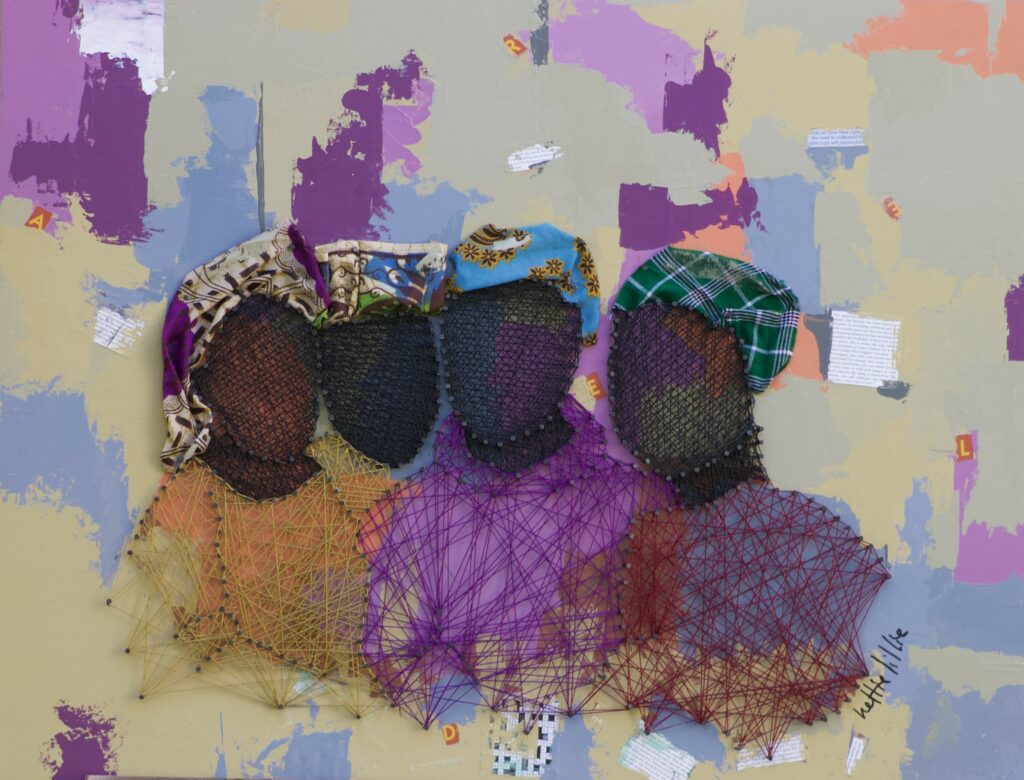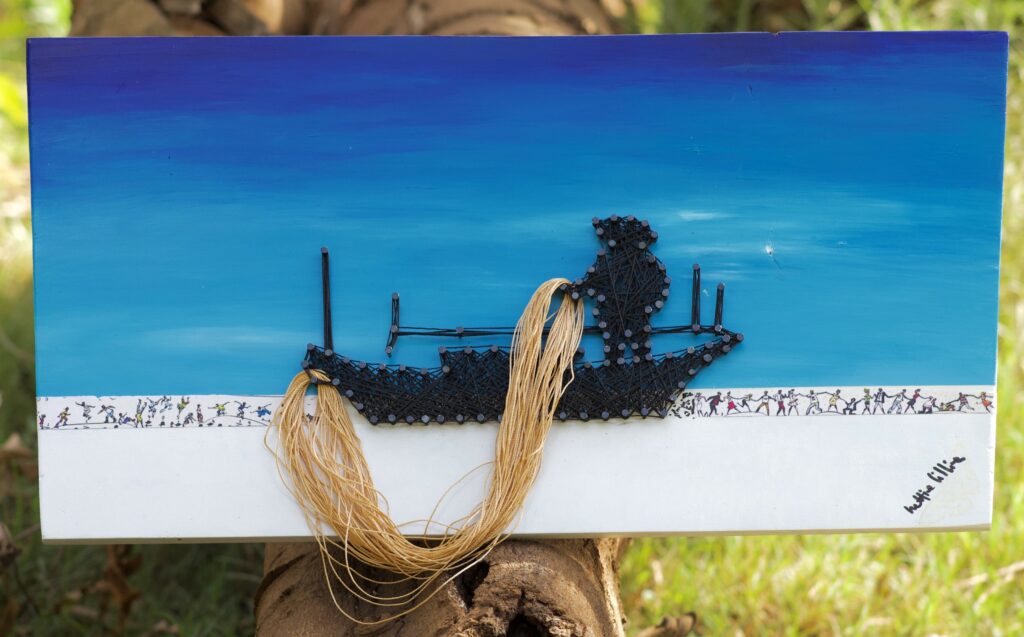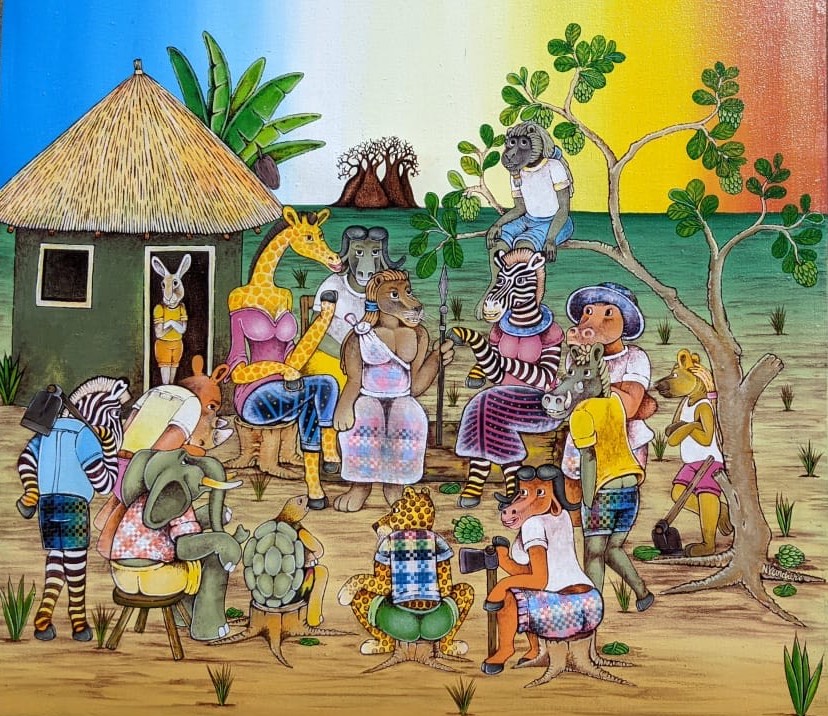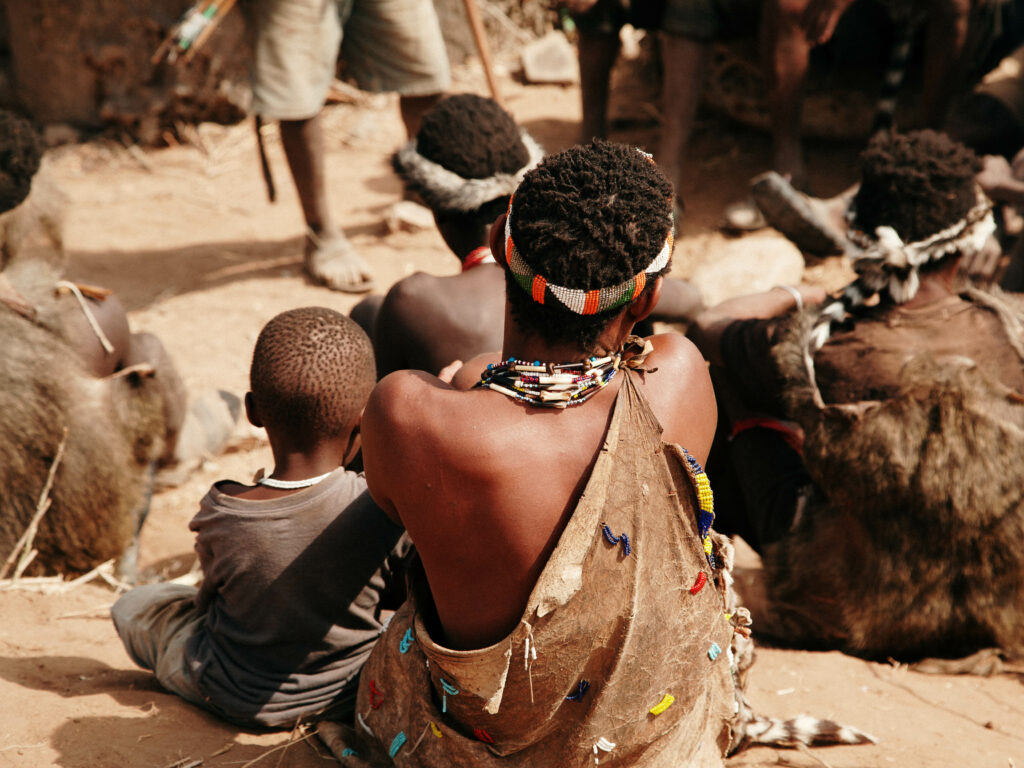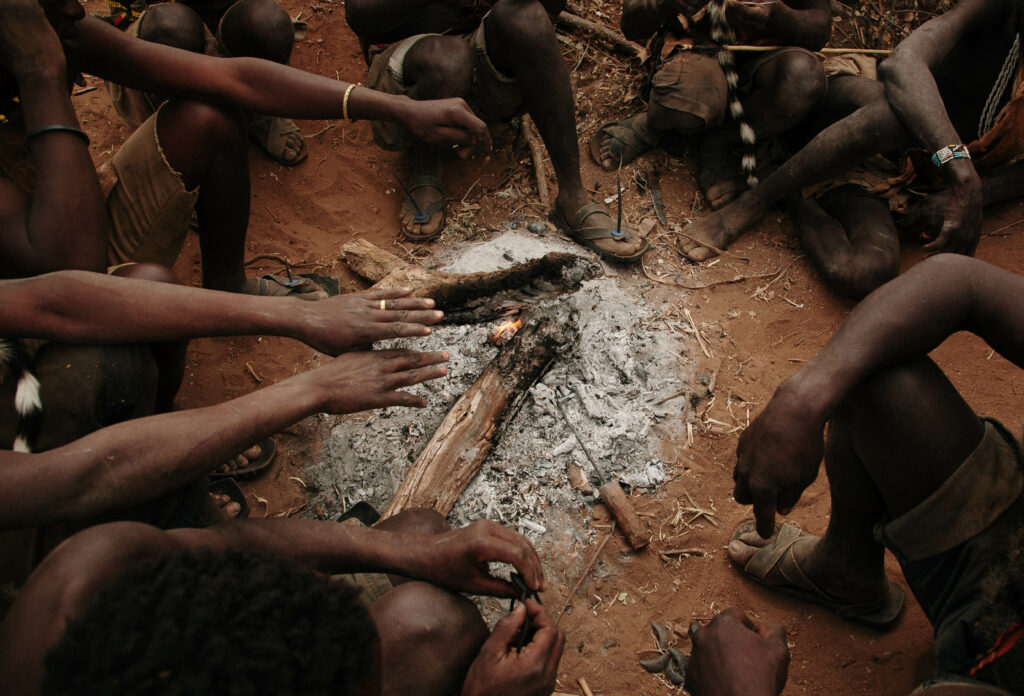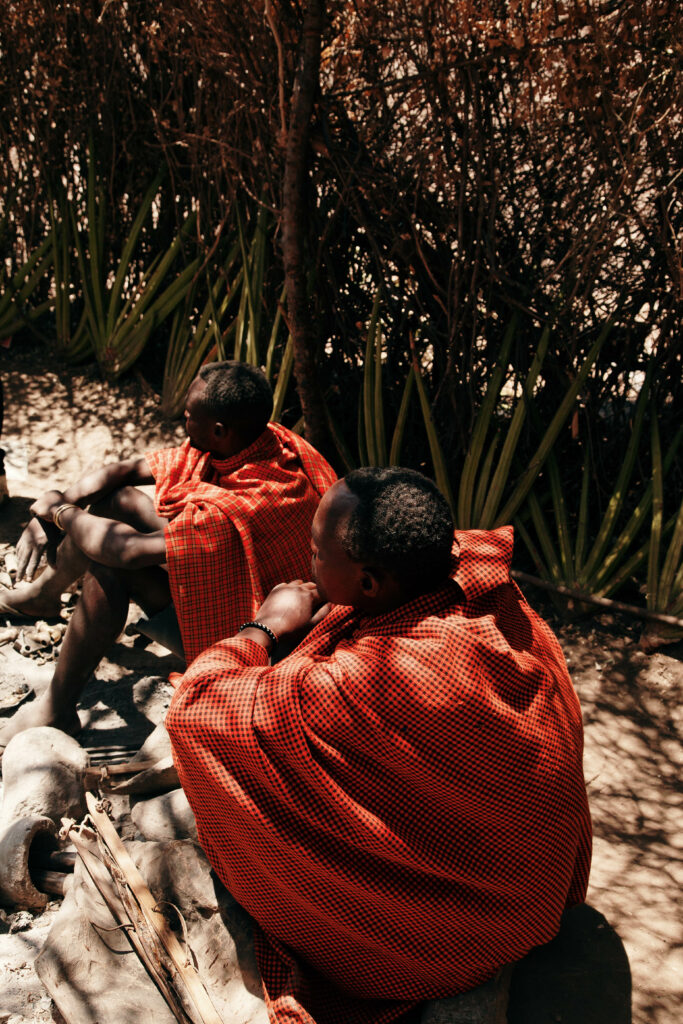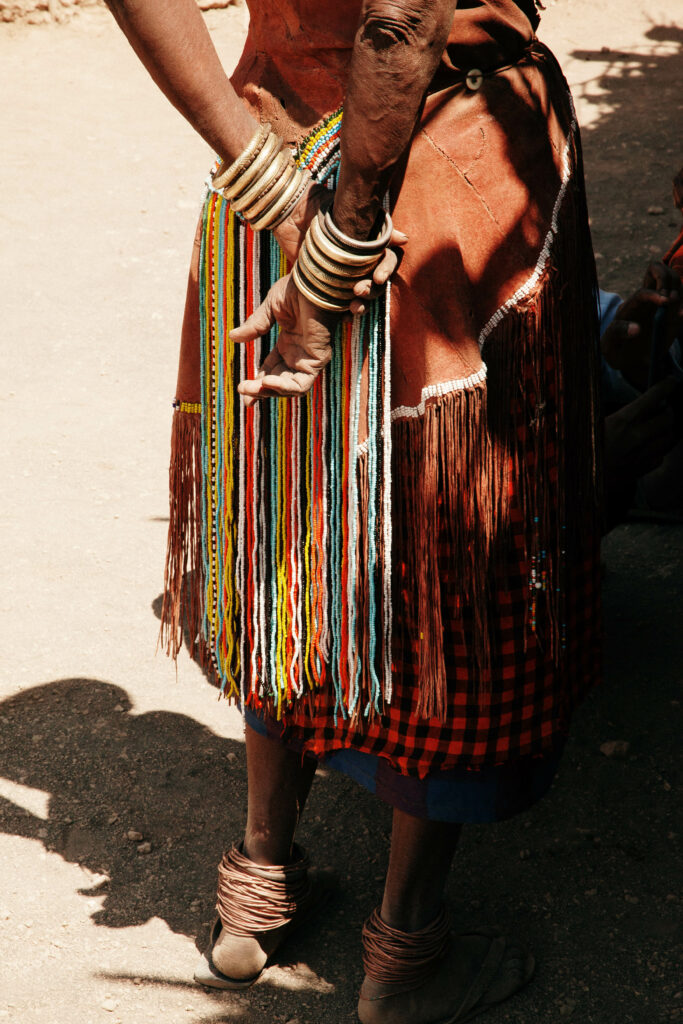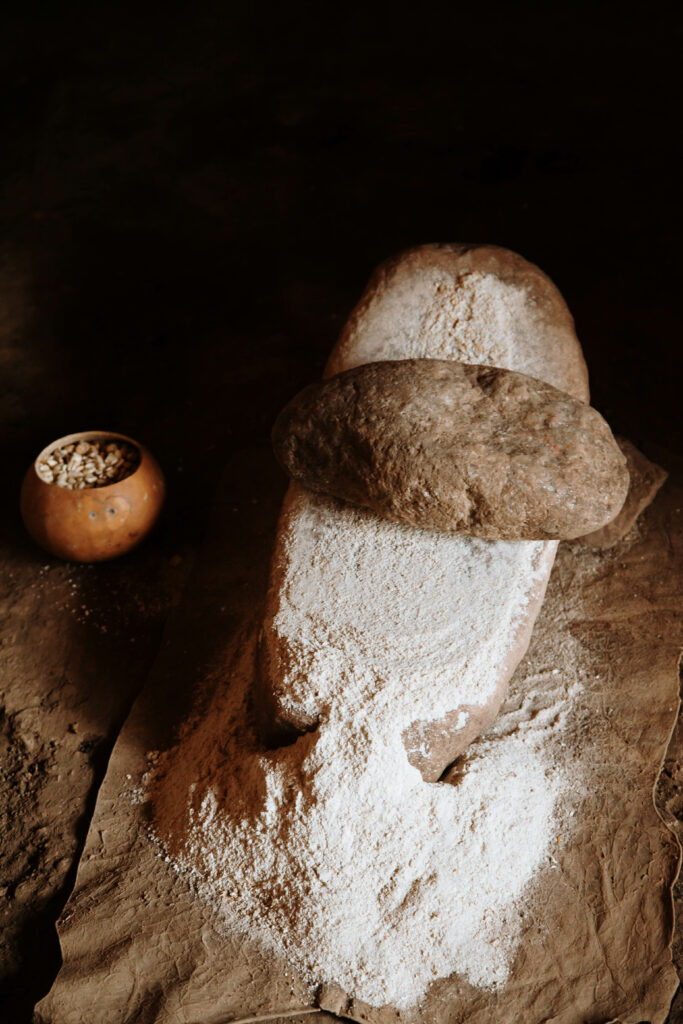The ‘Hapo Zamani Za Kale’ Project by AC4D/Africa | Tanzania
We are delighted to present this folktales project in partnership with Arts and Culture for Development (AC4D) Africa. 'Hapo Zamani Za Kale' is organized and curated by Elizabeth Mwambulukutu and Bonita Ngonyani, long-time EAS collaborators, and includes a podcast produced under the direction of Elizabeth and Annastazia Gura, co-founders of the project.
AC4D is a non-profit initiative working to reposition the role of arts and culture in the East Africa region through artist development, cultural research, and creative collaboration. Their innovative work engages artists and provides skill-development opportunities that forge creative and inclusive spaces.
‘Hapo Zamani Za Kale’ means 'Once Long Ago' in Kiswahili
Tanzanian storytelling sessions usually begin with the text depicting an opening or the beginning of a story. Even though members of different communities have their own unique style of starting a tale, Hapo Zamani Za Kale is by far the most common. Our Hapo Zamani Za Kale Project which culminates in an exhibition is a collaboration of Tanzanian artists aimed at promoting Tanzanian Folktales. The project seeks to preserve indigenous stories,
such as those from the Hadzabe and Datoga tribes.
As children growing up in Tanzania, almost all of us looked forward to listening to stories told by our grandparents. Each story was unique, funny, and had a moral lesson to teach us. As we look back on these moments, we remember them as times of bonding with our siblings and relatives around a fire, under a huge mango tree, in an aromatic kitchen or in our family rooms. Sadly today, the simple joys of telling and listening to African folktales are almost impossible to find in most families. This is not so for the Hadzabe and Datoga people who still carry on and and enjoy storytelling practices. They have been the holders of cultural traditions for generations. This exhibition is a celebration of our stories and those who have preserved them.
Jennifer Msekwa
My work is titled "Mackerels from the Indian Ocean" and is inspired by the story of "young mackerels and old turtle" translated from its original Swahili title "Vibua Vijana na Kasa Mzee" from the book Hapo Zamani Za Kale. My work portrays how the narratives of our cultural stories should not be seen as outdated. They are still relevant and productive narratives for preserving our history. Our identity and the values of our culture are timeless and can be used to teach our communities and offer solutions to the problems and challenges that exist at this time. The story of "young mackerels and old turtle" provides awareness of environmental care and the importance of marine conservation. Just like many other stories that teach by engaging with examples from nature, I use these characters as metaphors to build a nature conservation ethos within people’s minds. The story becomes an essential way of promoting nature conservation.
I use the colour black to reflect today's generation, in not knowing the narration of our stories. In the picture, there are three fish, the lower one has its mouth closed, representing the previous generation that does not exist and can no longer do the narration or tell the stories of that time. The fish in the middle looks fresh and big to show that the current generation, in between the past and future generations, has a great chance to develop, pass on and strengthen the narration of our stories in a variety of ways in order to provide an awareness and new beginning for the next generation of storytellers, so that they don't get lost. The fish at the top has its mouth open to emphasize and stimulate the narration of stories for future generations. The gills from both sides are used as metaphors–representing the act of gas change between the water and the fish's tissues (an effective and healthy activity for the fish). This represents how stories and historical narratives are exchanged from one generation to another.
The Indian mackerels or rastrelliger kanagurta (the scientific name for the mackerels found in the Indian Ocean), used as collages in this painting, are from the Indian Ocean, Tanga region, Tanzania.
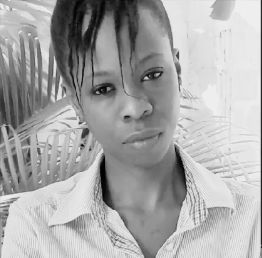
Jennifer Msekwa is a visual artist, environmentalist and natural resources researcher. Most of Jennifer's work centres on the role of nature in all aspects of life and nature conservation. She uses and considers art as a strong and effective tool for solving social issues. Her signature style, combining natural elements and material collaged with her realistic drawing and paintings, is a nexus for her artistic identity. She does not want to limit herself to using only certain natural materials, she believes there is a lot to discover in nature and that should not be done only by scientists.
Since 2016, Jennifer has participated in several environmental research studies, projects, group exhibitions and residencies, locally and internationally. She is the award winner of Ongea and Reveals awards for her artistic creativity and dedication to using art to convey nature conservation issues, climate change and human rights agendas. She uses her art practice to inform, educate, influence and teach various environmental and social issues.
Brenda Kibakaya
The Hapo Zamani za Kale storybook's 'Fimbo Ya Maajabu' story talks about God's mercy when you ask for anything, and is the inspiration for this painting. It is a story about a woman who asked God for food and received a magic stick in return. The saxophone instrument is also a magic musical tool, where people are healed when it is played. Reflecting Sunday church services, particularly during praise and worship, I wanted to express how the man's saxophone soothes people’s souls.
'Kisura' - This story is from the folklore. Kisura, a young and beautiful soul is working as a maid. She loves dancing and cooking. She works hard to feed her family in the village. I want my painting to reflect the women who have ambition and want to follow their dream, but can't always pursue their dream because they need to support their families.

Painting is Brenda Kibakaya's primary focus as an emerging visual artist. She has always loved to draw from a young age and in 2013, her sister encouraged her to take up art training and referred her to the Nafasi Art Space to learn from artists such as Paul Ndunguru and Gwalugano Mwakatobe at Nafasi.
Brenda graduated from the Institute of Finance and Management (IFM) in 2009 with a Bachelor's degree in Banking and Finance, and from the College of Business Education (CBE) in 2011 with a Master's degree in International Business Management.
A combination of acrylic, watercolour, and pencil colour is Brenda's preferred medium for painting abstracts and mixed media. Besides depicting the trials and triumphs that women and African society face, her work also includes still lifes of everyday objects. Her artistic practice has been developed through a variety of workshops in Dar es Salaam, such as Different An Art, a workshop with visual artist Miguel Costales, Women Xpress graffiti workshops by Wachata Crew, Zine future East Africa workshops by Sarita Mamseri, Nathan Mpangala's Caricature workshop at Nafasi Art Space, and Heather Chontos' Abstract Painting workshop.
Lilian Munuo
'Pamoja' is inspired by the story ‘Mfalme Mchoyo’. This is a story about a young woman who becomes a revolutionary in a community where women were banned from their kingdom by a king who believed that women are incapable of doing anything. The community came together and dressed her as a man to enable her to enter the kingdom. As in the story, our society marginalizes different types of people, like women, people with disabilities and other vulnerable groups. I want to change these narratives and retell their stories in a way that creates hope. This painting consists of duck-egg blue, marigold, lavender and off-white. Although these are colours are considered unpopular, I think they are beautiful when used correctly. The colour choice is parallel with the art piece and story.
'Uhai' (Life) - One of the largest sources of life is water. This image is inspired by the story of “vibua vijana na kasa mzee” which gives a glimpse of water pollution and urges us to take care of our water sources to preserve our environment. In the painting, the clear blue sky represents a healthy ecosystem, that is clean and one that we would like to achieve. The fisherman represents the people who are responsible for better methods and help take care of water sources. I wanted to shed light on water pollution, a major global environmental problem, because it can result in the degradation of all aquatic ecosystems – fresh, coastal, and ocean waters. Water pollution reduces the ability of the body of water to provide ecosystem services. It either does not support human uses, such as drinking water, or undergoes a marked shift in its ability to support its biotic communities, such as fish.
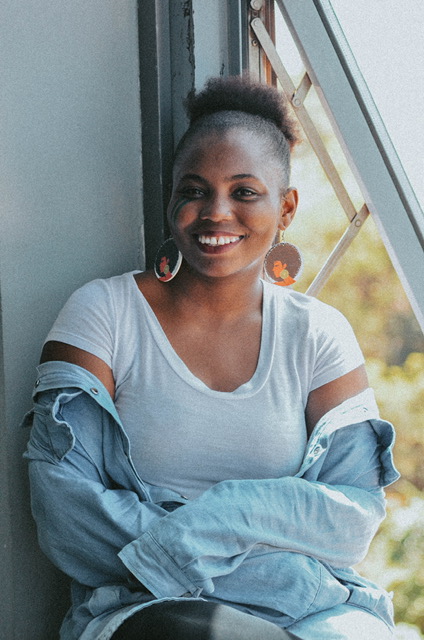
Lilian Munuo is a self-taught visual artist from Moshi, Kilimanjaro. Lillian uses different mediums in her creations including acrylic painting. Whenever Lilian creates something, it is always filled with hope and beauty. Growing up with a physical disability, she has used art as a way to express herself. She enjoys expressing stories that are narratives on women, children and disabled people.
George Emmanuel - aka Nyandiche
This artwork is inspired by the folktale 'Sungura na Wanakijiji', meaning the rabbit and the villagers. It is a story that emphasizes unity and smart work. The story describes animals gathering to discuss the digging of their communal well due to the need for water in the village. Many of the animals illustrated were present and agreed to participate in the work except the lazy rabbit. This piece holds personal meaning for me because it reflects the reality of my grandmother's village where I grew up--the hut, the trees and the unity among the people there during farming and harvesting seasons. It brings about many good memories from my childhood.
Podcast
'Sungura na Wanakijiji' (The Hare and the Villagers) depicted in George Emmanuel’s artwork, is from the Hapo Zamani za Kale book and includes a podcast produced under the creative direction of Elizabeth Mwambulukutu and Annastazia Gura, co-founders of Hapo Zamani za Kale project. The folktale, narrated in Kiswahili, highlights the themes of leadership, community building, cooperation, collaboration and Ubuntu, an African philosophy of “humanity to others”. The community members in the village, that the story centers around, feature characters that include lions, elephant and tortoise, among others. As the hare fails to cooperate with others in constructing the water source, this Hapo Zamani za Kale podcast highlights what happens along with the moral of the story, including how the underdog emerges as the village’s hero.
To listen to the entire podcast click here.
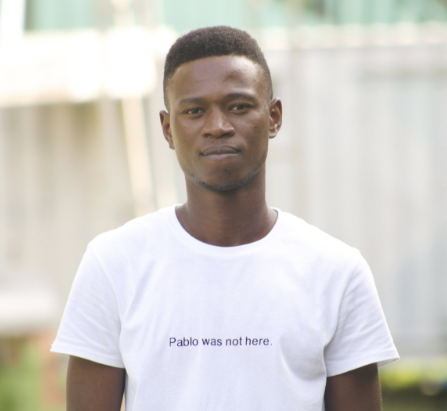
George Emmanuel (also known as Nyandiche) is a visual artist based in Dar es Salaam, Tanzania. He started loving art at a very young age just after finishing his studies. In 2014 he officially started his journey as an artist. His works are mainly influenced by his emotions and surroundings and often merge traditional Tanzanian techniques with conceptual ideas. He experiments with painting (Tinga tinga) and graphics, the abstract and the real, portraiture and cubism. He participated in various exhibitions as part of a war against corruption in 2014, the East Africa Art Biennale in 2019, Berlin lamifa Art & Dine#4 in 2020, Belgium Embassy in 2020, In Progress in 2020, Inner Visions in 2020, Women in Art in 2021, Hakuna Kulala in 2021, Huahua online exhibition in 2022 and Tanzania Artist with Ashley Collins exhibition in 2022.
Ammal Aboud
'Mwindaji' is the Swahili word for hunter. This image is a depiction of a Hadzabe leader demonstrating their bow and arrow. The Hadzabe are a people that have remained hunter-gatherers for hundreds of years. This way of life has remained a mainstay in their lives, even as the rest of the world is traveling into the modern era. Hunting plays a special role in the physical and spiritual lives of the Hadzabe people. They pray to Ishoko (the sun) or Haine (Ishoko’s husband) during a hunt and practice rites of passage where young boys prove their manhood by hunting big game.
'Leo na Kesho' & 'Moja kwa wote' highlights the Hadzabe leader and his son sitting with their fellow tribesmen and the community of Hadzabe men enjoying the warmth of a fading fire. The titles meaning “Today and Tomorrow” and “All for One” are a nod to the generation of Hadzabe tribesmen and tribe women who continue to keep the Hadza way of life alive and virtually unchanged for over 500 years.
They pass on their culture, customs, ecosystem-friendly communal way of life to future generations. The future is unknown and unpredictable but learning from the Hadzabe way of living harmoniously with nature and one another is worth a closer look as it is a practice that has persevered for hundreds of years.
'Kibo na Mawenzi' is inspired by the folktale by Charity Masamu. The image depicts two Datoga men in bright red blankets. They work together towards a common goal to break apart and melt scrap metal to craft bracelets and arrowheads Datoga tribesmen are famous for crafting.
'Shanga' depicts the vibrantly adorned skirts worn by Datoga women to express themselves and emphasize a primordial tie with their land. Datoga women create and wear earth-tone leather skirts, and neutral-tone clothing and colours accessorised with leather and bronze trinkets and necklaces.
'Grinding Stone' highlights a stone used by the Datoga tribe's women for grinding corn into flour used to make food. Datoga women grind the stone used by generations of women before them and sing.
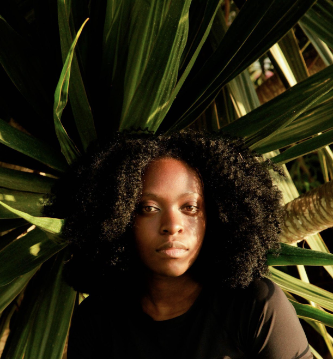
Ammal Aboud is a photographer born and raised in Dar es Salaam, Tanzania. Ammal uses candid imagery and portraiture to tell the stories unique to the groups and individuals that feature in her images.
From an early age, Ammal was always encouraged to paint and draw. Eventually, she discovered that photography was her preferred craft because it provided an instant and immersive self- expression tool.
As a result, Ammal is inspired to document life in objective and authentic representations of those featured in her images, as more than nameless objects to be observed from afar but rather as sentient individuals and groups who are indeed unique and as equally complex as the viewer and worth a closer look.
Like many young individuals just getting their bearings in the world, Ammal has many aspirations. In brief, she aspires to hone and expand her skill set and build a larger body of work that will benefit this generation and the next.
